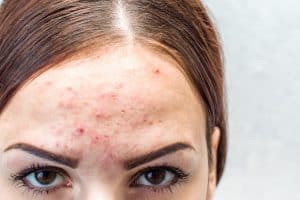The horrors of warts and witches are a tale as old as time. But don’t you worry, because that’s just fiddles and fiction! If you have a wart, don’t worry about it too much because today, we talk about possible ways to treat them and how to prevent them from occurring in the first place.
How can you treat warts?
While warts do disappear on their own, they take mighty long to do it! Sometimes you might want to make a wart go away because of its possibly unappealing appearance. So, let’s have a look at what you can do.
Salicylic acid to warts rescue!
This acid works by peeling off dead skin cells. When it comes to wart treatment, reducing the layers one by one can help reduce the size of the wart, maybe even making it disappear completely. You can attempt this treatment by first soaking your wart in warm water to soften it. After this, you can apply salicylic acid to it. However, it is essential to note that you must protect the skin around the wart by covering it and performing a spot treatment only on the wart. This will have to be done for several months. It is best to avoid doing it yourself if you have sensitive skin or if you have multiple warts.
A thing called cryotherapy.
This wart treatment method seems a bit harsh but really is not. It involves using liquid nitrogen on the wart to dismantle it. This leaves behind a blister that will heal in a week or so. This is not a method that you can use at home. It can and should only be performed by a medical professional in a clean and sanitised environment.
Surgery for wart treatment
You can remove your warts through the process of surgery. Laser surgery is also used to zap warts off. Depending on the type and extent of the wart, your doctor will be able to guide you through this procedure. Keep in mind that surgery can leave behind a scar.
Cantharidin?
Have you ever heard of a blister beetle? Well, it turns out that an extract from a blister beetle, coupled with some other chemicals, is used to create a blister on the wart. When removed, the dead wart comes off with the blister. However, this substance is toxic and needs to be used only under the supervision of a doctor. It should not be used in undiagnosed skin lesions and not on mucosal membranes such as an oral cavity or genital lesions. You should avoid this if you are diabetic or have circulatory problems.
When to see a doctor?
A doctor is the best person to diagnose your warts. They will tell you what type of wart you have and what steps you should take to prevent it from spreading. If you want to remove a wart, then we would recommend going to a doctor. Most of the treatments include procedures that a doctor or a dermatologist should only do. Since warts are contagious, they can spread to other parts of your body or face. They can also grow in size, change in colour or bleed. In all these cases, you must immediately visit a doctor and get it checked.
How to prevent warts?
You can do certain things to prevent warts from occurring in the first place or spreading to more parts of your body.
1. First and foremost, do not touch other people’s warts.
2. If you touch someone’s wart, wash your hands thoroughly before you touch your own skin.
3. Maintain good hygiene and avoid using other people’s personal items like towels, socks etc.
4. If you already have warts, then you should probably avoid touching, scratching or picking them to reduce the risk of them spreading.
5. Try to avoid biting your fingernails.
6. Keep your warts covered to keep them from spreading.
7. Wear footwear at home and in communal spaces that are used by others.
8. Do not shave areas that have warts on them.
9. When grooming, use different tools on areas that have warts and regions that don’t.
10. Keep your hands and feet dry.
The silver lining
Most warts don’t need to be treated unless they are unstable. Eventually, they just go away. But if you are ever in doubt, do not hesitate to see a doctor.
Disclaimer
The remedies mentioned in the blog are the widely popular ones. However, it is in no way a substitute for medical advice, treatment or diagnosis. Avoid using these if you have sensitive skin or are prone to allergies.
Before trying any remedy, always test a small quantity on your skin to check for any adverse reactions or allergy to any particular ingredient. Then, in case of an emergency or any reaction, immediately connect with a doctor who can offer the proper treatment.
FAQ’s
1. Is it bad to leave a wart untreated?
Usually, a wart will go away in a couple of years if it is left untreated. However, during this time it is important to take steps to avoid its spread. You should also keep a keen eye on it for any changes and visit a doctor in this case.
2. Can duct tape remove warts?
No. There are random theories that duct tape used over time can help remove warts. However, it’s best to leave it to your doctor for the right treatment.
3. What is inside a wart?
Warts are made of excess keratin and cell growth.
4. Can you pop a wart?
We recommend that you definitely do not try to pop or remove a wart physically yourself. This may just make things worse.




